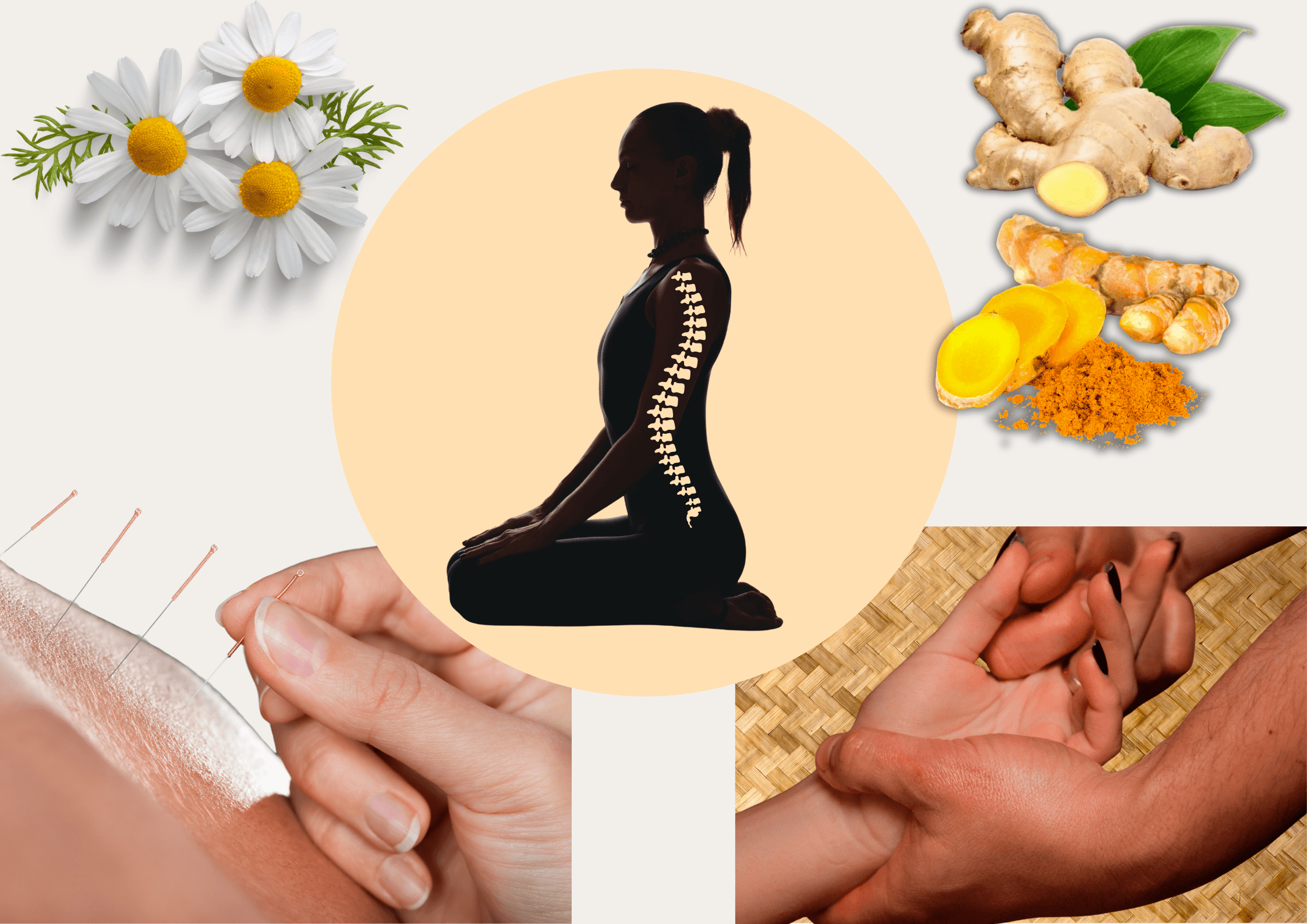Introduction
In modern healthcare, patients are increasingly turning to complementary practices that extend beyond conventional biomedicine. Online platforms have become the primary gateway for discovering alternative medicine practices, reflecting a collective move toward holistic, preventive, and integrative models of care. According to the National Center for Complementary and Integrative Health (NCCIH), nearly 40% of adults in the United States report using some form of complementary or alternative medicine (CAM) annually. In regions such as the Philippines and across Asia, this percentage is even higher, owing to the deep integration of traditional therapies into daily life and the accessibility of indigenous remedies.
This trend signals a broader cultural and economic transformation. Patients are no longer seeking symptomatic relief alone; they are actively pursuing modalities that prioritize long-term wellness and emphasize the interconnection of mind, body, and spirit. The Global Wellness Institute estimates the wellness economy at over $4 trillion, underscoring the widespread demand for such approaches. Furthermore, many individuals arrive at clinical consultations already informed by online research and seek guidance on integrating alternative therapies into their care plans.
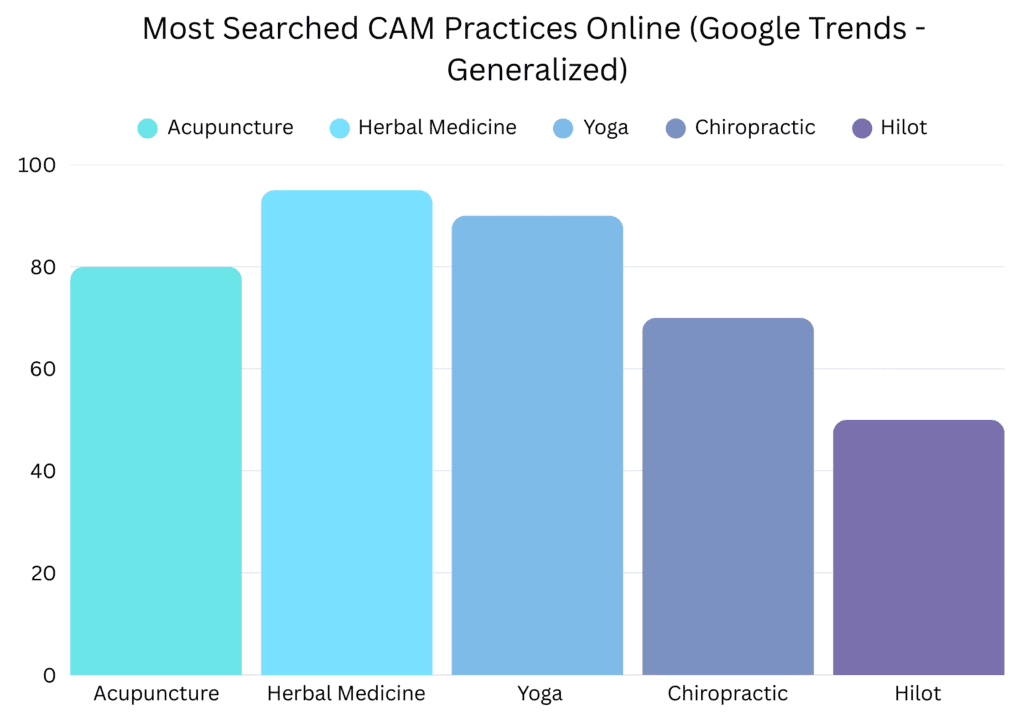
Digital resources have expanded access to health information but also bring challenges. Search engine analytics show consistent growth in queries related to acupuncture, herbal supplements, chiropractic care, yoga, and indigenous healing traditions. Social media has amplified this visibility, yet unverified claims often circulate alongside evidence-based recommendations. For healthcare professionals, this evolving environment requires discernment, cultural sensitivity, and a responsibility to guide patients safely.
The following sections highlight five of the most frequently researched alternative medicine practices, analyzed through reputable sources and contextualized within global and local healthcare systems.
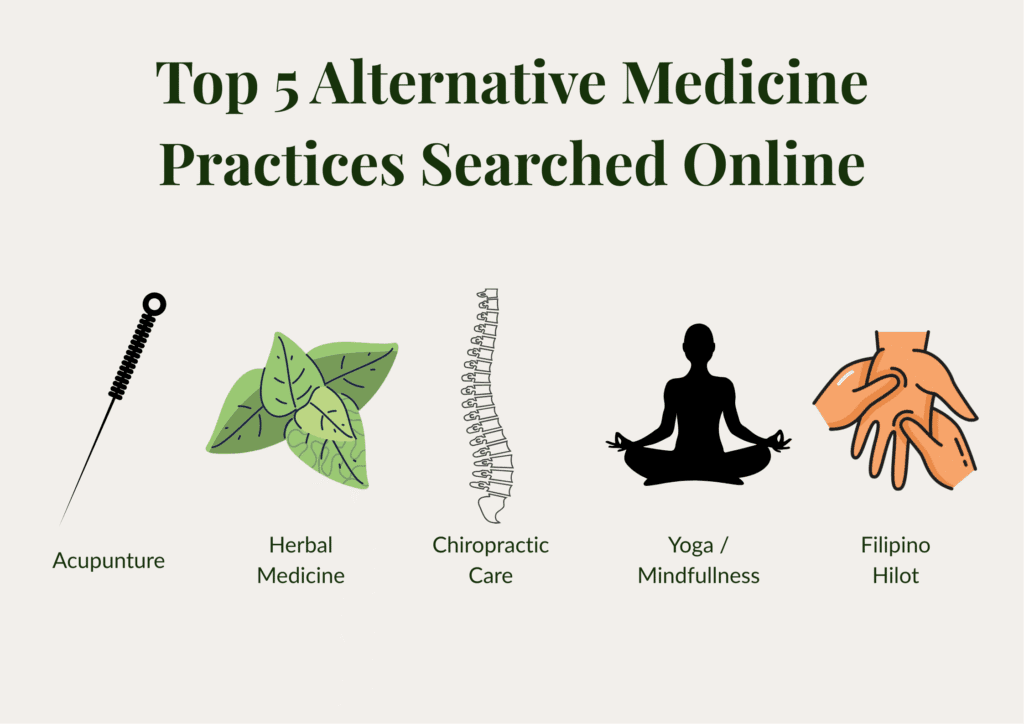
1. Acupuncture
Acupuncture, a central practice in Traditional Chinese Medicine (TCM), involves inserting fine needles at designated anatomical points to regulate the flow of energy, or qi. Patients commonly research its effectiveness for managing chronic pain, migraines, stress disorders, gastrointestinal issues, and fertility concerns. In recent years, it has also been studied for reducing chemotherapy side effects and improving sleep quality.
Evidence: A review in Mayo Clinic Proceedings concluded that acupuncture provides significant benefits for chronic pain conditions such as osteoarthritis, tension headaches, and lumbar pain. The World Health Organization (WHO) recognizes acupuncture for over 100 conditions, including anxiety and hypertension. Globally, many clinical institutions now include acupuncture in integrative treatment programs.
Considerations: To ensure safety, patients should consult licensed practitioners who use sterile techniques. Treatment frequency varies by condition—some require only a few sessions, while others may benefit from ongoing therapy.
Global Perspective: Once localized to East Asia, acupuncture is now widely practiced in Europe, North America, and Australia. In several countries, insurance plans even reimburse acupuncture sessions, reflecting its acceptance in mainstream healthcare.
2. Herbal Medicine
Herbal medicine is one of the most enduring and widespread forms of alternative practice. Patients frequently search for botanicals such as turmeric for inflammation, ginseng for energy, and echinacea for immune support. Common delivery forms include teas, tinctures, capsules, and topical applications.
Evidence: The NCCIH highlights promising evidence for several herbs: turmeric (curcumin) for its anti-inflammatory properties, ginger for nausea and digestion, and chamomile for anxiety reduction. Ginkgo biloba continues to be studied for its cognitive effects. However, the lack of strict regulation for herbal supplements leads to variability in safety and efficacy.
Cultural Relevance: In Asia, herbal remedies are often the first response to minor ailments. In Western markets, these remedies are packaged as “natural supplements,” appealing to patients wary of synthetic pharmaceuticals.
Risks: Natural remedies are not risk-free. For instance, St. John’s Wort—used for depression—can interfere with birth control and other medications. Patients should always disclose herbal use to healthcare providers.
Market Dynamics: The herbal supplement industry continues to grow globally, fueled by consumer preference for plant-based therapies and expanded research into phytomedicine.
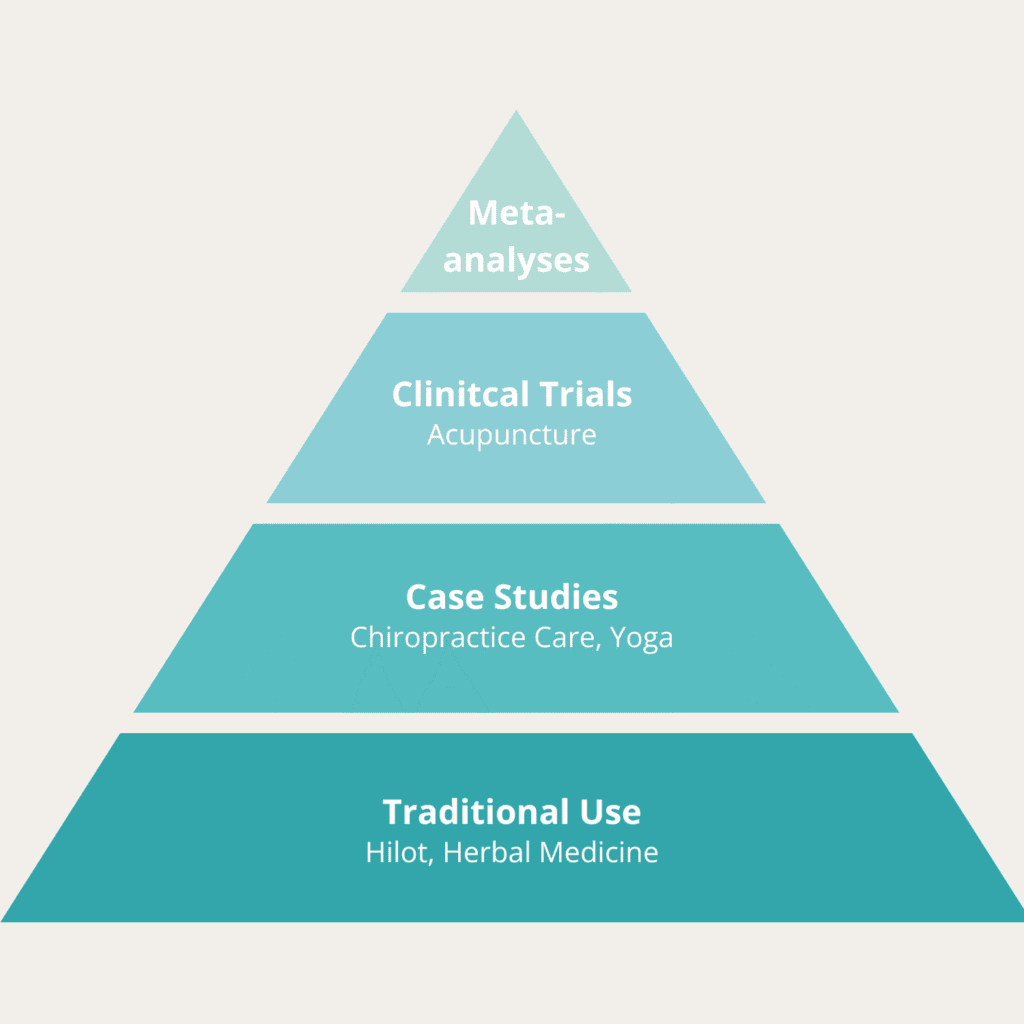
3. Chiropractic Care
Chiropractic medicine focuses on spinal alignment to optimize musculoskeletal and nervous system function. Patients frequently explore chiropractic adjustments for lower back pain, postural problems, cervical strain, and athletic injuries. Chiropractors often complement adjustments with exercise plans, ergonomic counseling, and lifestyle advice.
Evidence: The American Chiropractic Association reports that chiropractic care is effective for acute lower back pain and may reduce reliance on opioid medications. Clinical studies also suggest improved mobility, function, and reduced headache frequency when spinal manipulation is delivered by trained professionals.
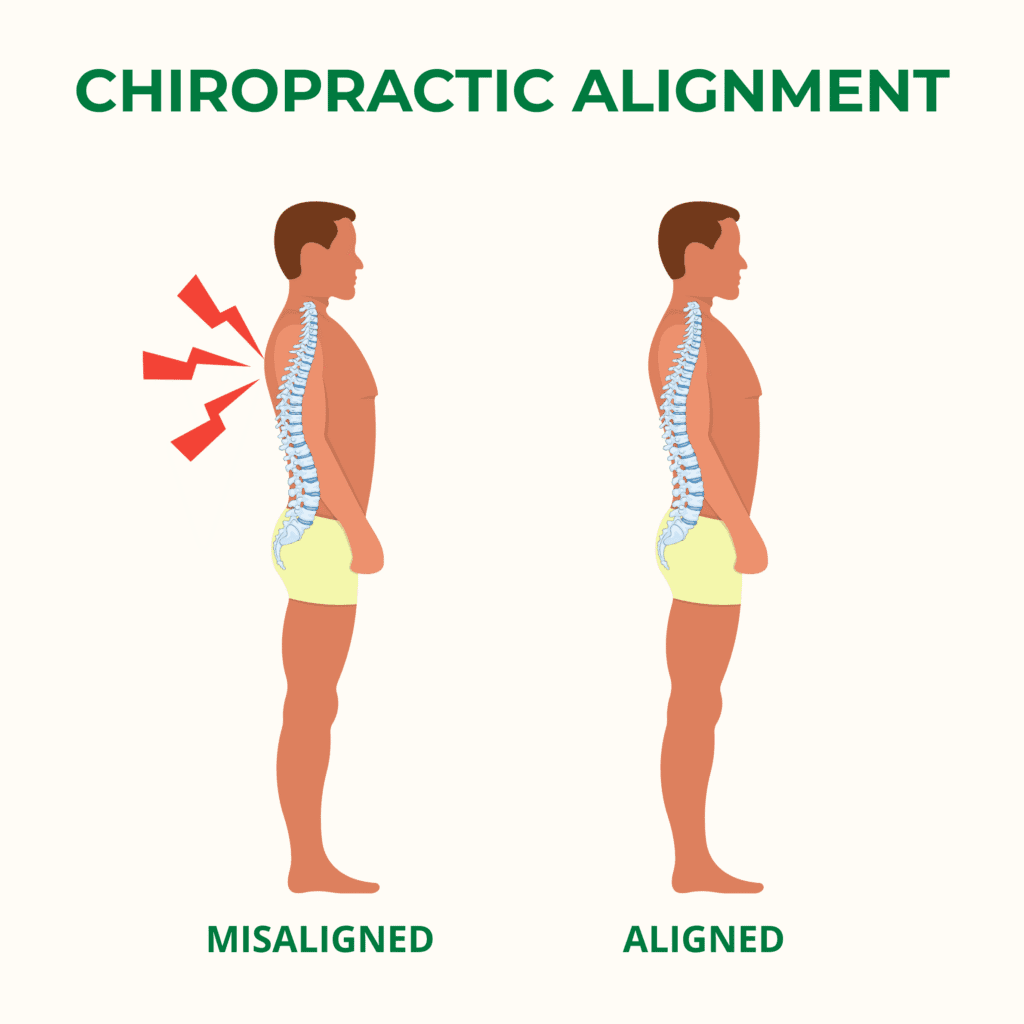
Considerations: Chiropractic care is generally safe under licensed practitioners but should be avoided by patients with conditions such as osteoporosis or vertebral fractures. Increasingly, chiropractic services are being integrated into multidisciplinary rehabilitation programs.
Patient Perspective: Many patients report improved quality of life, reduced pain, and enhanced performance. However, results vary and depend on individual circumstances.
4. Yoga and Mind-Body Therapies
Yoga, meditation, and related practices are among the fastest-growing alternative therapies worldwide. They emphasize the mind-body connection, combining movement, breathwork, and mindfulness to promote resilience and overall health. Yoga integrates physical postures (asanas), breathing exercises (pranayama), and meditation, while mindfulness centers on present awareness.
Evidence: Harvard Health Publishing highlights yoga’s role in reducing stress, improving flexibility, and managing chronic illnesses like hypertension and diabetes. Randomized controlled trials demonstrate that mindfulness meditation can reduce cortisol, improve sleep, and enhance emotional stability. Practices like Tai Chi and Qigong are also recognized for their cardiovascular benefits and fall-prevention effects in older adults.
Global Reach: With more than 300 million practitioners worldwide, yoga illustrates the globalization of traditional practices. Digital platforms and mobile apps have broadened accessibility, while schools and corporations increasingly adopt mindfulness programs.
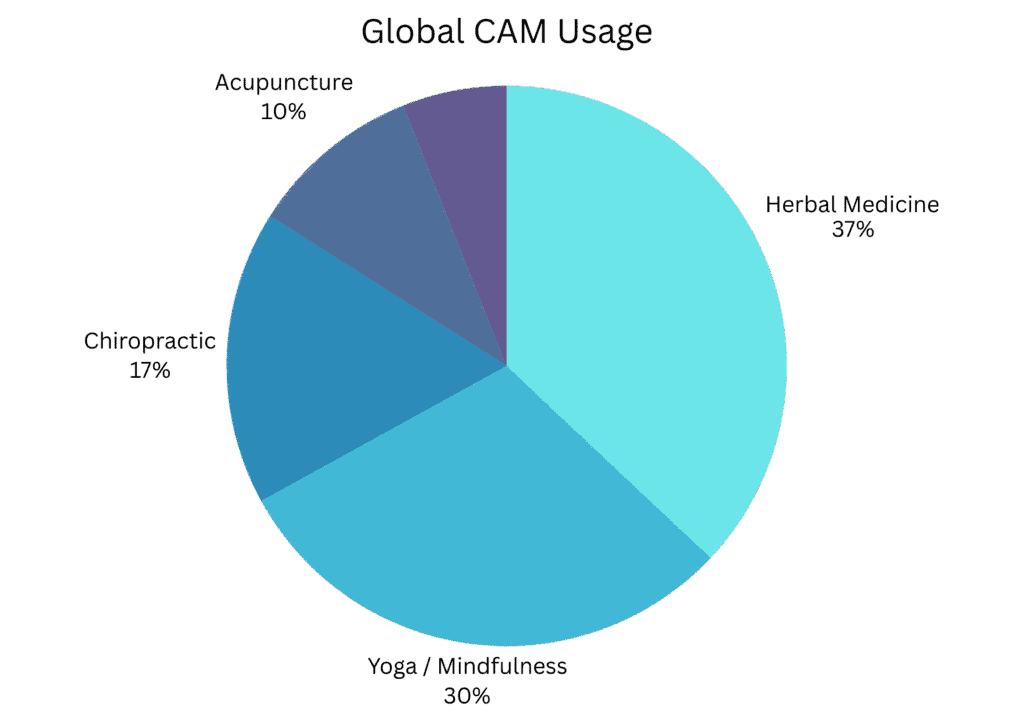
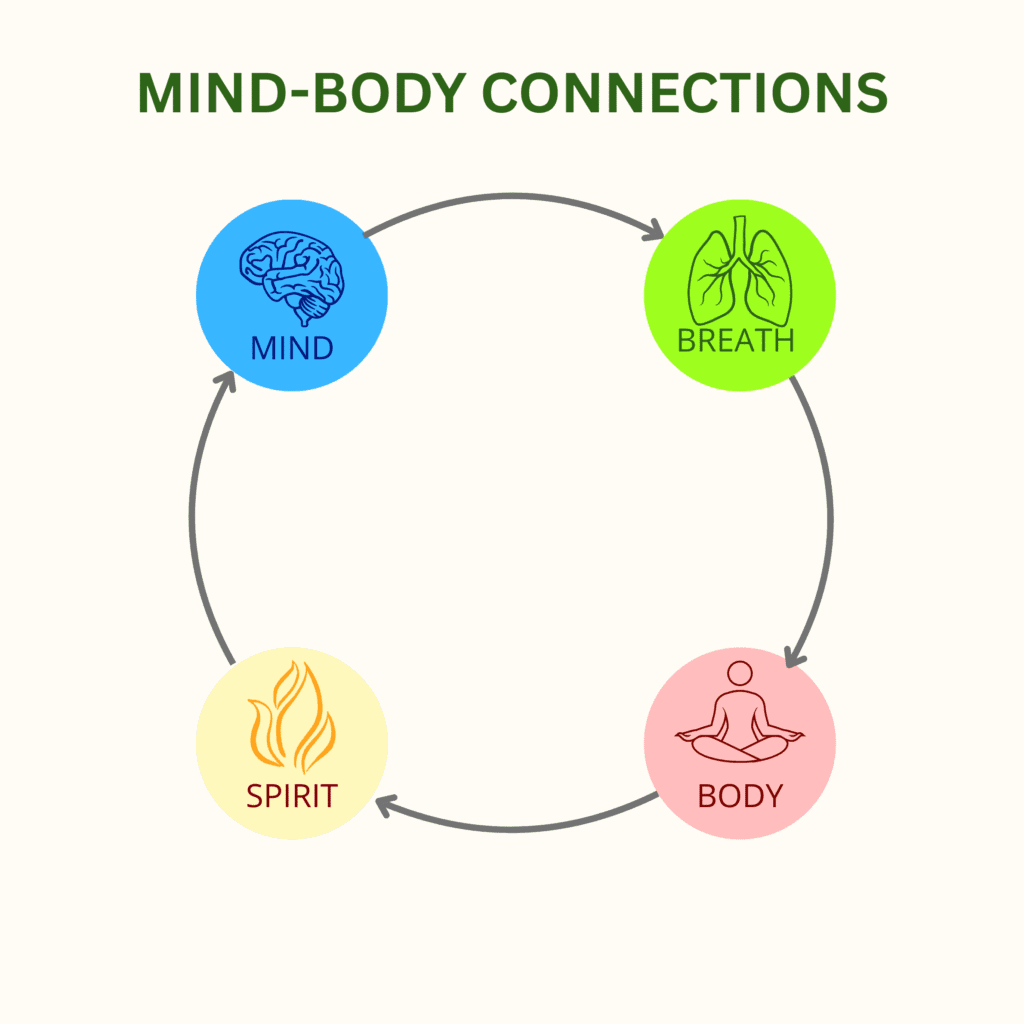
Applications: Patients frequently use yoga and meditation for stress relief, posture improvement, and performance enhancement. Online resources make these practices accessible to diverse populations.
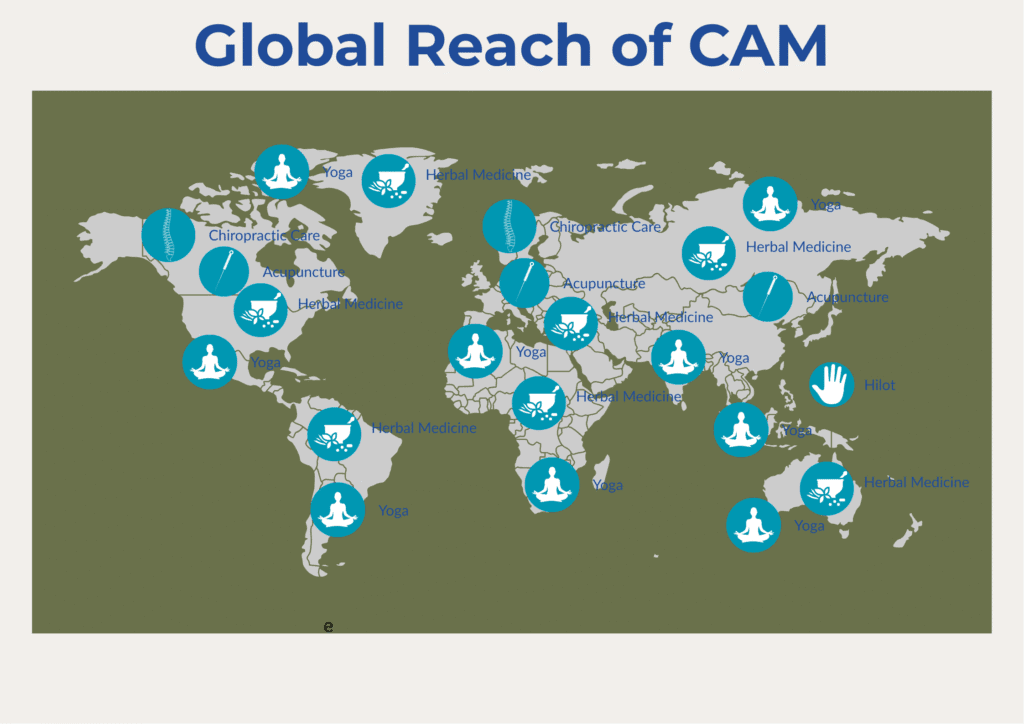
5. Traditional Filipino and Indigenous Healing
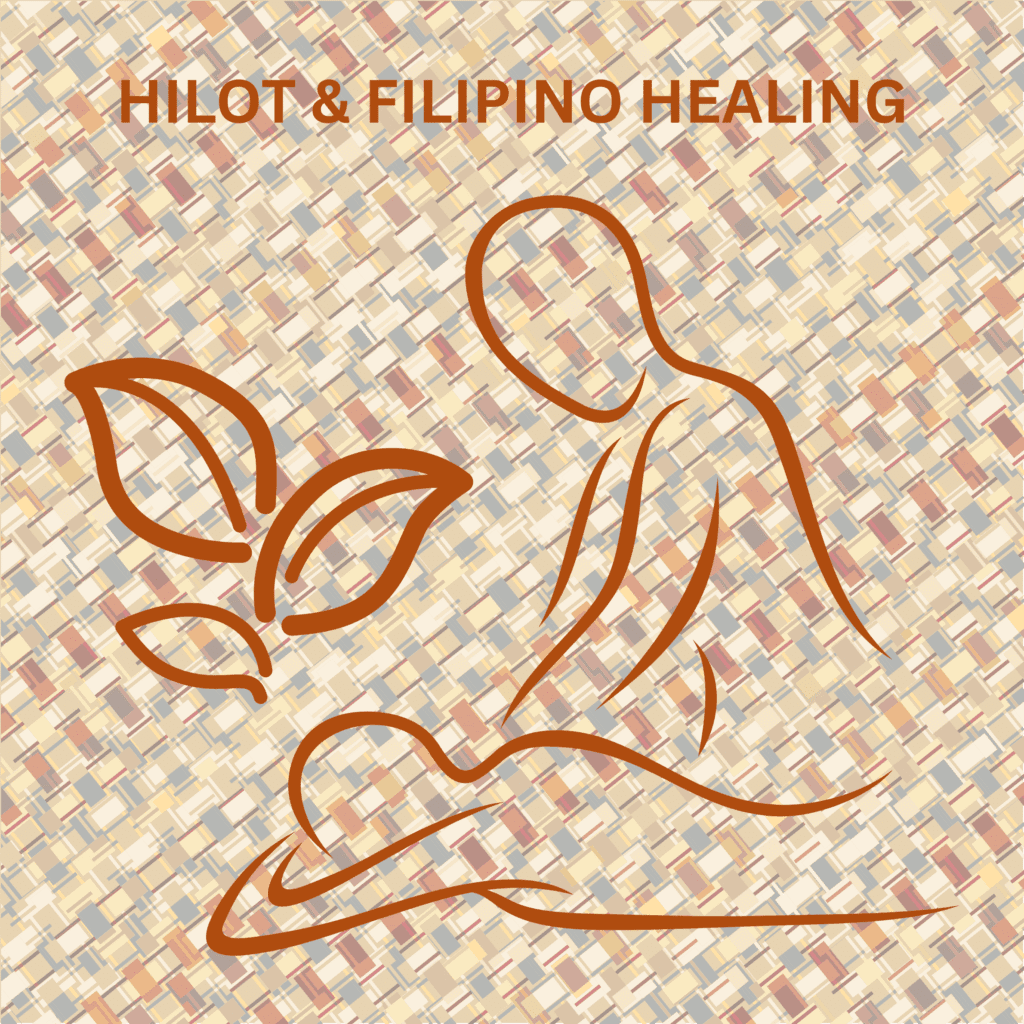
In the Philippines, indigenous healing traditions such as hilot (therapeutic massage), albularyo practices, and herbal decoctions remain central to community wellness. These approaches often combine physical, emotional, and spiritual healing, reflecting deeply rooted cultural values.
Evidence: Research in the Philippine Journal of Science confirms the enduring importance of indigenous healing in rural communities, especially where biomedical resources are scarce. Hilot practitioners serve diagnostic and therapeutic roles, identifying imbalances through touch. The Department of Health, through the Philippine Institute of Traditional and Alternative Health Care (PITAHC), actively promotes safe and integrative use of these practices.
Comparative Context: Similar to Ayurveda in India and Traditional Chinese Medicine in China, Filipino healing underscores the role of cultural heritage in health behavior. These practices often incorporate rituals and spirituality, adding a holistic dimension to patient care.
Current Developments: Collaborative research is underway to preserve traditional knowledge while evaluating efficacy through scientific studies. Universities and local healers are working together to document practices and integrate them into public health frameworks.

Conclusion
The surge in online searches for alternative medicine practices reflects a patient population increasingly interested in integrative, culturally aware, and preventive healthcare models. Many of these practices—when grounded in evidence—offer safe, cost-effective, and empowering strategies. However, risks remain when therapies are self-administered without guidance or when conventional treatment is delayed.
For healthcare providers, staying informed about CAM is crucial for building trust and engaging in effective dialogue with patients. Individuals are more likely to disclose their use of acupuncture, herbal remedies, or yoga when they feel understood and respected.
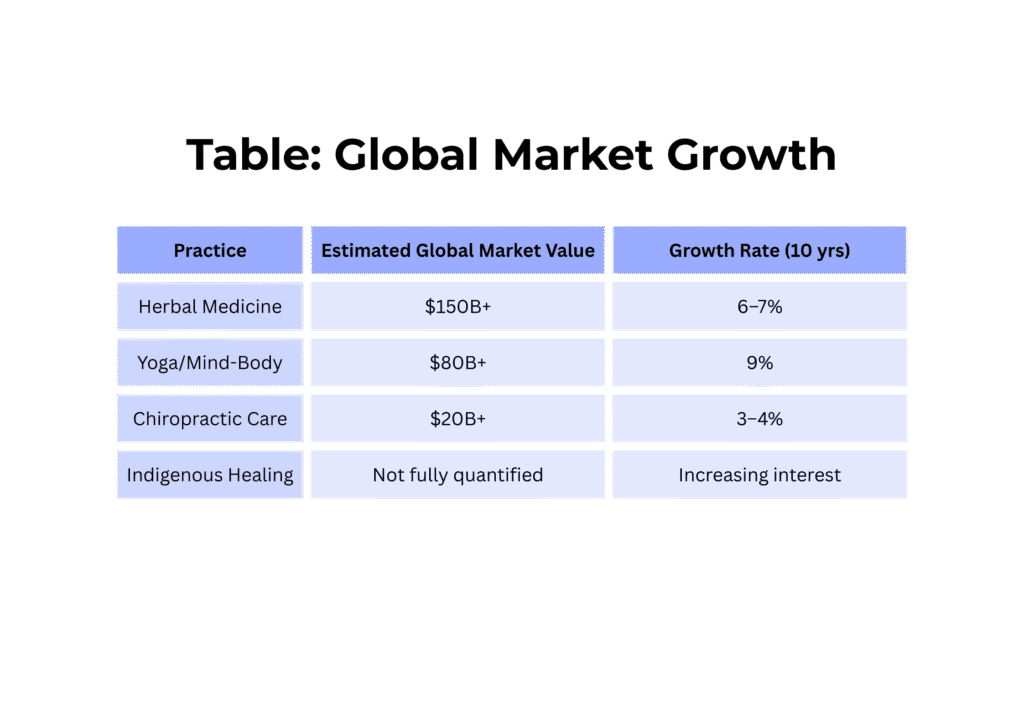
The future of healthcare will not hinge on choosing between conventional and alternative methods but on creating integrative systems that balance both. Ensuring safety, scientific credibility, and inclusivity will be central as integrative medicine continues to evolve.
Get our Holistic Wellness Presence Kit today
Boost Your Online Presence for Free
Is your wellness practice visible online? Download our free Holistic Wellness Presence Kit and discover proven strategies to attract more patients.
Download Free KitBook a Free Online Presence Audit
Grow Your Clinic with Confidence
Not sure where to start? Let’s review your digital presence together. Schedule a free online presence audit and get actionable steps tailored to your practice.
Book Free Audit
